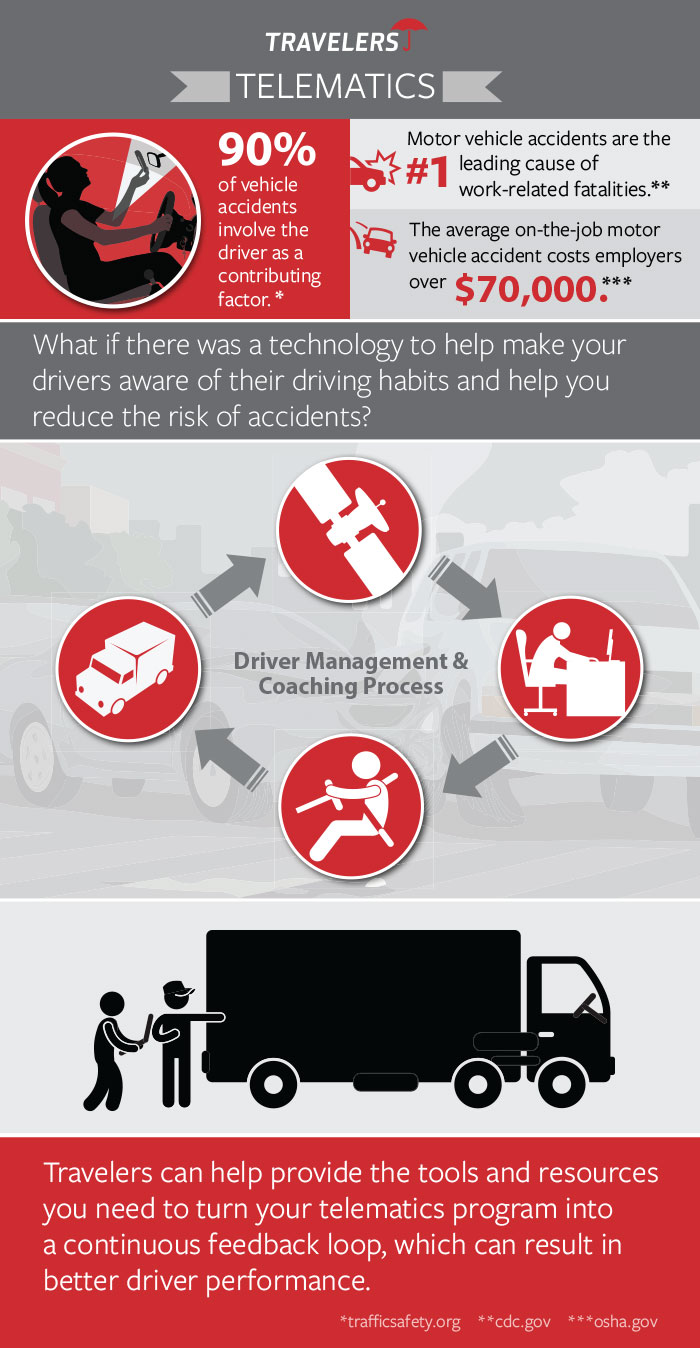Vehicle Telematics Program Guidelines


Vehicle telematics systems can provide fleet managers valuable data to help improve operational efficiencies and fleet safety. Operationally, the data can help with vehicle location, better communication with drivers on the road, navigational support, route and workflow optimization and fuel and customer service benefits. These devices can also capture data about driving behaviors, such as speeding, braking, abrupt lane changes and idling. Using this data as part of an ongoing safe driving feedback and coaching program can help reduce the potential for accidents and help keep your drivers, customers and the public safe.
It is important to get driver buy-in for your telematics and feedback program. Begin by having an open discussion.
- Explain the operational data collected by your telematics system and its operational benefits
- Explain the data collected by your telematics system and its role in helping to reinforce driving safety
- Discuss your safe driving feedback program. Let drivers know that:
- The program is designed to acknowledge safe driving as well as identify opportunities for safe driving improvement. It is a positive session to reinforce and encourage safe driving behaviors.
- You will be providing and seeking feedback, and explain how often.
- The feedback session is a two-way street. There may be circumstances that are not explained by the data alone. For instance, hard braking may not necessarily be an indication of speeding. Instead, it may be an action by your driver to avoid a potential accident when another driver suddenly cut in front of them.
- Driving behavior data also may offer evidence that your driver was, in fact, driving safely.
- Review your safe driving policies, rules of the road and safe driving expectations. Your feedback and coaching session can be an opportunity to review your company’s safe driving policies, rules of the road and safe driving expectations.

TELEMATICS
90% of vehicle accidents involve the driver as a contributing factor.*
Motor vehicle accidents are the #1 leading cause of work-related fatalities.**
The Average on-the-job motor vehicle accident costs employers over $70,000.***
What if there was a technology to help make your drivers aware of their driving habits and help you reduce the risk of accidents?
Driver Management & Coaching Process
Travelers can help provide the tools and resources you need to turn your telematics program into a continuous feedback loop, which can result in better driver performance.
*trafficsafety.org
**cdc.gov
***osha.gov



